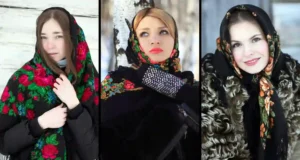The exact interpretation of a woman’s nose jewelry sexually depends largely on cultural viewpoint. For some, these accessories represent sexuality and availability openly. Yet others see nose studs as typically embracing femininity free of such implications.
Even within traditions, variances exist, like in certain tribes where married women exclusively wore such ornaments, expressing their wifely roles. Meanwhile, prostitutes deliberately flashed similar items identifying services provided as well.
For modern Western notions, sexuality attributions remain nuanced. While minority perspectives associate visibility with unabashed liberation, most take nose medals at face value. Their presence alone communicates little about private habits.
Instead, women finance piercing such items for diverse reasons. Rings flaunt individual character beyond relationship status alone. Some select jewelry emphasizes spirituality or cultural pride too.
Overall, sexualizing seems off-base when discussing average modern wearers. Their choices center on self-empowerment, style, or tradition rather than signaling intimacy availability too broadly. Context ultimately informs interpretation appropriately.
Nose ring meanings in different cultures
The meaning of a nose ring on a woman can vary depending on the culture. In some cultures, nose rings are seen as a symbol of beauty, fertility, or marriage. In other cultures, they can be seen as a sign of sexual availability or rebellion. Finally, the meaning of a nose ring is up to the woman who wears it.

What does a nose ring mean in India?
In the beautiful country of India, nose rings have different meanings depending on the region.
For many parts, a nose ring shows that a woman is married. After her husband passes away, she will remove it as a sign of respect. Traditionally, girls would get their noses pierced at age 16, which marked marriageable age.
The nose ring also pays homage to the goddess Parvati, who is worshipped for marriage. Hindus believe she wore a nose stud, so women follow her example as a sign of devotion.
However, unlike other symbols like the mangalsutra necklace, nose rings are not strictly limited to married women alone. Both single and married ladies can wear one if they choose.
In some areas, an unmarried woman’s nose ring aims to attract potential husbands. It emphasizes her readiness for marriage and shows off her beauty. After marriage, the nose ring celebrates a wife’s fertility and ability to bear children.
Overall, the nose stud has deep religious and cultural importance for females across India, with varying meanings in each locality. But it usually connects to marriage status, religious piety, or highlighting good looks.
What does a nose ring mean in the Middle East?
In the culturally diverse region of the Middle East, the significance of a woman’s nose ring varies somewhat between places. The nose stud symbolizes wealth, status, and femininity in many areas.
Larger nose jewelry indicated that a lady came from a richer family. This tradition was often seen during wedding ceremonies too.
In North African nations like Egypt, for example, it was traditional for the groom to present his bride with an elaborate nose ring when they married. This publicly displayed his wealth and ability to support a family.
The jewelry piece was a prized gift announcing the new union. Similarly, in places such as Turkey, nose rings marked a woman as married or spoke of her fertility.
However, in very conservative locations within Saudi Arabia, nose studs were less common for females in the past. Yet nowadays, some lively young ladies in that country wear the accessories to show rebellion against strict norms.
On rare occasions elsewhere, larger nose rings have been perceived as hints toward sexual availability too. Overall though, the symbolism depends greatly on local norms within each Middle Eastern culture.
What does a nose ring mean in Africa?
The significance of wearing a nose ring varies widely for African women across the continent’s different regions and cultures.
In certain ethnic groups like Kenya’s Maasai, these accessories represent beauty and demonstrate femininity. The metals used, or designs shown can highlight facial features.
Meanwhile, in Ethiopia’s Oromo, nasal jewelry symbolizes a lady’s ability to bear children. This emphasizes virtues highly valued in their society.
In nations such as Nigeria as well, the Hausa tribe sees nose studs as indicators of social standing. Larger or finer materials worn illustrate one’s elevated status.
At the same time, numerous tribes use this practice to mark a female as another man’s married property. Among those in certain areas, only wives could wear such jewelry.
Its presence declares that woman is rightfully taken. The style or extras like gemstones similarly profiles the husband’s wealth level at times too.
However, interpretations change depending on the location inside Africa. So understanding local traditions provides insight into a nose ring’s real connotations for women in that culture.
At their core, though, these accessories usually show beauty, fertility, or relationship status in numerous ethnic communities.
What does a nose ring mean in the Americas?
The significance of nose jewelry for females varies considerably across the diverse cultures in North and South America.
Among some indigenous communities, like certain Native American tribes, these accessories once represented beauty or fertility status.
Within these groups, nasal adornments sometimes served spiritual roles too. They helped channel mystic forces or linked ladies to ancestral heritage.
However, other tribes assigned different interpretations. For example, some assigned nose rings more to male members as power indicators.
Meanwhile, nose studs have tended to highlight femininity or show a lady’s marriage in nations like Mexico and Peru with longstanding traditions. Yet modern meanings focus more on self-expression.
These body decorations let individuals across the Americas stylize their look and project individualism.
Every day in America’s many metropolitan areas now, nasal piercings commonly denote fashionable personal choices. Wearers select rings, hoops, or other designs best match their individual tastes rather than deeper traditional roles.
While cultural significance survives aspects for Native peoples, present interpretations emphasize identity and aesthetic preferences.

What does a nose ring mean in Western cultures?
In most Western societies like Europe and North America, wearing a nose stud by females typically holds little sexual implication in itself. These accessories have primarily become fashion choices reflecting self-expression through individual style choices.
Whether small or dangling rings, they mainly let ladies customize looks without indicating relationships to others physically.
Of course, as with any accessories, some observers may attribute their own meanings. A few still see nose piercings as an indicator of more liberal social norms by counterculture wearers.
Such adornments get associated with rebellion against traditional expectations by these viewers. So for them, studs take on connotations relating to openly embracing sexuality too.
However, this represents a minority view now. Most women favoring nose jewelry simply do so because they find the options aesthetically appealing or fun accouterments representing personal flair.
By choosing rings highlighting faces, they showcase character and uniqueness rather than make any statements about sexual conduct to broader populations. Meanings stay internalized and subjective between individuals alone in Western societies generally.
What is the meaning of left-side nose piercing?
The significance of getting a left nostril piercing varies considerably between cultures for ladies.
In Hindu beliefs particularly, this adornment symbolizes elevated beauty, expressly honoring the holy matrimony goddess Parvati. Displays of her nose jewelry depictions influence women to mimic virtues through this tradition.
Beyond aesthetics, ancient spiritual ideologies also associate the left side with feminine energy channels. By opening this nostril specifically through piercings, it manages to better connect with the intuition powers internalized.
Some traditions insist this alignment also conveyed enhanced healing or protection from darkness.
At the same time, western viewpoints increasingly see such options as straight declarations of nonconformity too.
Rejecting conventional standards by puncturing unusual places sends social messages about courageous individualism. Wearers flaunt independence from restrictive norms in this manner.
Overall, the interpretation depends on individual reasons for the choice. While honoring religious foremothers motivates some, others simply admire the looks produced.
Modern women especially assign meanings centered around self-expression, absent deeper symbolism. Context alone determines accurate connotations according to their perspectives.
What is the meaning of right-side nose piercing?
Across diverse cultures, women’s decisions to pierce their right nostrils hold varying significance reflective of either spiritual traditions or individual preferences.
In cultures like India, such adornments commonly impart notions of marital virtue and fertility essential to family lineages.
Meanwhile, certain mystical belief systems also associate this particular nasal chamber with strengthening one’s stability. Piercings aim to channel propitious energies attracting calm fortunes.
Bedouins similarly saw them as status broadcasts, while Native Americans imbued further spiritual connections.
Modern Western outlooks focus less on symbolism, though. Here, right nostril jewelry emphasizes self-image over prescribed roles. Wearers underline confidence on their own terms, absent deeper intrinsic meanings. They choose adornments suiting personal style above all else.
Even so, trace spiritual symbolism persists for some. Notions that this placement psychic bonds wearers intimately or assists in finding life partners reflect antiquated teachings.
Whether lending stability, connections, or simple attractiveness, interpretations remain diverse, living under social lenses unique to the background.
Overall, accurate understanding stems from respecting diverse viewpoints. While cultural traditions associate certain implications, individual self-expression best defines present-day significance incontestably. Context offers needed perspective into this complex topic.
What does nose ring mean in the bible?
While the Good Book never directly addresses nostril jewelry, context clues from biblical verses indirectly reference such adornments.
In Genesis, as a gift example cited, these accessories likely signified status among recipients. Beautiful women received nose rings denoting esteem just as other treasures distinguished nobility fundamentally.
Prophets like Ezekiel too alluded to applauding Israel with marriage metaphors involving pleasant ornamentation distribution.
Divine admiration compared to pouring material blessings upon a loved one is akin to how humans decorate treasured partners. Nose rings represented special affectionate symbols within holy matrimony frames hence.
Meanwhile, several traditions interpreted Deuteronomy’s admonishments against blended apparel as umbrellas that preclude men’s jewelry donning. Scholars debate applications for today’s wear, yet biblical eras associated such accessories diversely.
Context clues suggest these articles held esteemed roles, whether symbolizing status, affection, or simple aesthetics.
Without explicit doctrines, meanings diverge across theological views. But glimpses into ancient Near Eastern lifestyles portray nose rings bearing respected virtues occasionally beneficial comprehending given scriptural circumstances.
Cultural nuances supply mandatory lenses illuminating jewelry’s significance inside biblical texts.

Summary
The meaning of nose rings on women varies across cultures. In some cultures, it symbolizes beauty, fertility, or marriage, while others associate it with sexuality or rebellion.
In India, nose rings mark marital status and devotion. In the Middle East, they reflect wealth and femininity. Africa’s varied cultures attribute beauty, fertility, or marital status.
In the Americas, they signify spirituality, femininity, or individual expression. Western societies often embrace nose rings as fashion choices.
Left-side piercing can hold spiritual or individual significance. Right-side piercing may symbolize marital virtue or self-image.
The Bible indirectly references nose rings as symbols of status, affection, or aesthetics based on context. Ultimately, meaning varies by culture, spirituality, and personal choice.
FAQ
What does a bull nose ring mean sexually?
The meaning of a bull nose ring, in terms of sexual symbolism, is often associated with BDSM practices. In BDSM culture, a bullnose ring can symbolize submission or ownership. It is typically a ring worn in the septum of the nose, and it is commonly seen as a visual representation of a person’s willingness to engage in BDSM activities or their identification as a submissive partner.
What does a septum nose ring mean sexually?
The sexual meaning of a septum nose ring varies based on cultural, personal, and individual interpretations. It can symbolize sexual liberation, body positivity, and embracing one’s sexuality, break societal norms, or signal a person’s queer identity within the LGBTQ+ community. In BDSM and fetish culture, it may indicate submission or willingness to engage in such activities, serving as a symbol of ownership or identification as a submissive partner. Context and perspectives play a significant role in its interpretation.
What does a nose ring in the middle mean?
A nose ring in the middle, or a septum piercing, holds diverse meanings. In Hindu culture, it symbolizes marriage, beauty, and femininity. It may be part of traditions or cultural identity in African and indigenous cultures. For individuals, it’s a form of self-expression and fashion. In countercultures like punk, it’s a symbol of nonconformity. In BDSM and fetish culture, it can signify dominance and submission, reflecting interests or participation in BDSM activities. Interpretations depend on cultural and personal context.
What does a right nose piercing mean sexually?
The sexual meaning of a right nose piercing varies based on individual interpretation and culture. It’s essential to respect diverse viewpoints and avoid assigning specific sexual connotations to piercings, as they don’t inherently denote sexual orientation or preferences. Respecting individuals for who they are, regardless of body modifications, is vital to avoiding stereotypes and fostering understanding.
What does a left nose piercing mean sexually?
The sexual meaning of a left nose piercing varies based on individual interpretation and culture. It’s crucial to respect diverse viewpoints and avoid assigning specific sexual connotations to piercings. Nose piercings, whether left or right, do not inherently indicate one’s sexual orientation or preferences. In some cultures, left-side piercings hold traditional beliefs unrelated to sexuality. Social media trends may focus on fashion and personal preference, not sexual symbolism. It’s essential to respect individuals regardless of their choice of body modifications.



